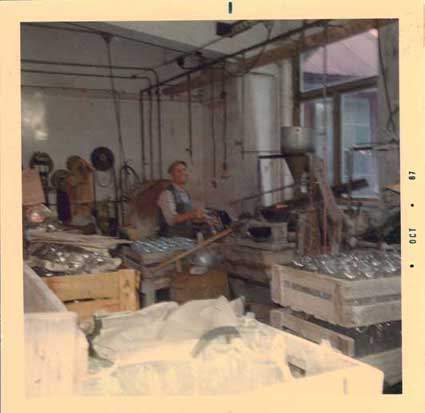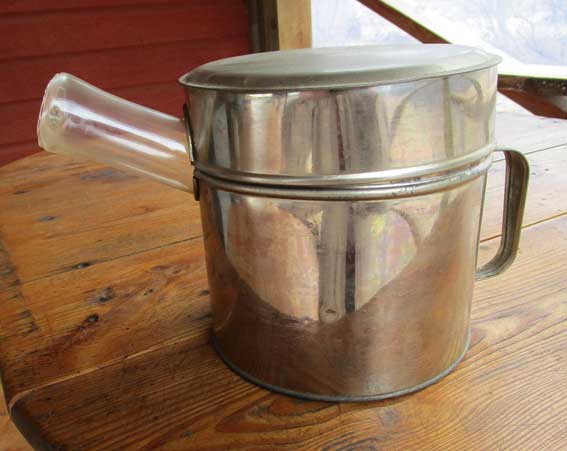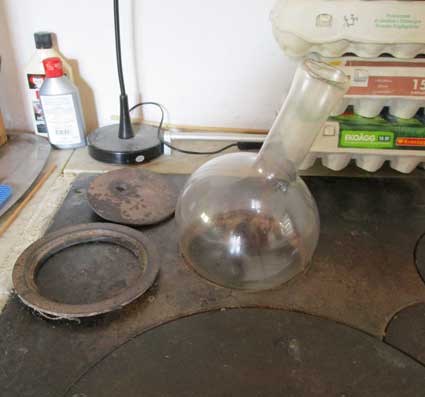— — This is an outdated page, click here for the updated page — —
The history of the building
After consultation with the antiquarian at Smålands Museum and the person responsible for the culture at the municipality, we have decided to do as little as possible to the interior of the building: the walls show traces of 25-30 years of work, and 60 years of further wear.
The photo above is, unfortunately, un-dated, but is probably showing the second "hot-shop"
building, the building erected after the fire in 1897. To the right, behind the boxes and the wood piles,
one can see the cutting shop - or, it might have been called the "cofffee pumpkin shed" at
the time (see below).
That is the building where Bergdala Glastekniska Museum is found.
(Read more about coffee pumpkins at the bottom of this page)
Bergdala glassworks was started in 1889. There was a cutting-shop from the beginning. We have found information that there were 12 cutting wheels, and that they were powered by a locomobile, which at the same time was used to power a saw. (Hermelin, Hovmantorpsbladet, 1952)
The first glassworks, including cutting-shop, storehouse and woodshed, was destroyed by a fire in
May 1897. There are differing information about when the re-building was done, but it appears that
everything was up and running in 1907, at the latest.
Thus: this building was erected some time between 1897 and 1907.
But... the book En gång Bergdala, alltid Bergdala relates what Albert Björk, born 1901,
tells: that there was no cutting-shop before 1923. At that time (he tells) the old
"cofffee pumpkin shed", was equipped with the basic machines for "post-production"
work - grinders, polishing equipment and some stone wheels for facet cutting.
This information have us reassess the age of the building; now we only know the earliest time (1897)
and the latest, which has to be set to "before 1923".
The village was electrified in 1922, but the electricity was not enough for the cutting shop. Instead
they used a kerosene engine, but according to Albert Björk that engine was not very reliable.
The hydropower plant (very small) was built by the miller at Lövås, a long kilometre south.
The mill and the power turbine are long gone, but the dam and the building which once housed the saw are
still there.
(See the
map for a walk on the Bergdala village site. If the weather is nice, a walk is recommended!)
Nowadays we call this buildig "The Old Cutting shop". According to info in
Bergdala, en liten guide
(only in Swedish), there were once 21 workplaces: 18 cutting wheels and 3 grinders.
They were powered by belts - the transmission axle still sits in the ceiling - by a steam engine (some
say) or a kerosene engine (Albert Björk said). Outside the north gable there is something that
can be interpreted as a former base for a machine.
Once there was probably a door towards the west (the parking space), north of the existing door (which leads to the attic).





